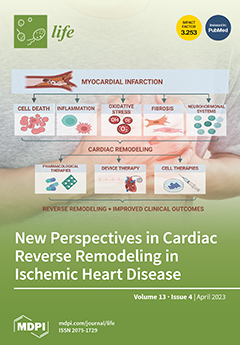Introduction: Proteinuria is a major risk factor for the progression of chronic kidney disease (CKD). Sodium-glucose cotransporter 2 inhibitors (SGLT2i) demonstrated a nephroprotective and antiproteinuric effect in people with type 2 diabetes (T2DM) and proteinuric CKD. We conducted a retrospective study to evaluate clinical and laboratory variables that can help predict proteinuria reduction with SGLT2i therapy. Materials and methods: Patients affected by T2DM and CKD who started any SGLT2i were included in the study. Patients were stratified into two subgroups, Responder (R) and non-Responder (nR), based upon the response to the therapy with SGLT2i, namely the reduction in a 24 h urine proteins test (uProt) of ≥30% from baseline levels. The aim of the study is to analyse differences in baseline characteristics between the two groups and to investigate the relationship between them and the proteinuria reduction. A Kruskal–Wallis test, unpaired t-test and Chi
2 test were used to test the difference in means and the percentage (%) between the two groups. Linear and logistic regressions were utilized to analyse the relationship between proteinuria reduction and basal characteristics. Results: A total of 58 patients were enrolled in the study: 32 patients (55.1%) were in the R group and 26 patients (44.9%) in the nR group. R’s patients had a significant higher uProt at baseline (1393 vs. 449 mg/24 h,
p = 0.010). There was a significant correlation between baseline uProt and proteinuria reduction with SGLT2i in both univariate (β = −0.43, CI −0.55 to −031;
p < 0.001) and multivariate analyses (β = −0.46, CI −0.57 to −0.35,
p < 0.001). In the multivariate analysis, there was a significant positive correlation between the estimated glomerular filtration rate (eGFR) and proteinuria reduction (β = −17, CI −31 to −3.3,
p = 0.016) and a significant negative correlation with body mass index (BMI) (β = 81, CI 13 to 50,
p = 0.021). The multivariate logistic regressions show a positive correlation of being in the R group with diabetic retinopathy at baseline (Odds Ratio (OR) 3.65, CI 0.97 to 13.58,
p = 0.054), while the presence of cardiovascular disease (CVD) at baseline is associated with being in the nR group (OR 0.34, CI 0.09 to 1.22,
p = 0.1), even if these statements did not reach statistical significance. Conclusions: In this real-life experience, following the administration of SGLT2i, a reduction of more than 30% in proteinuria was observed in more than half of the patients, and these patients had a significantly higher baseline proteinuria value. Variables such as eGFR and BMI are variables that, considered in conjunction with proteinuria, can help predict treatment response before therapy initiation. Different phenotypes of diabetic kidney disease may have an impact on the antiproteinuric response.
Full article






